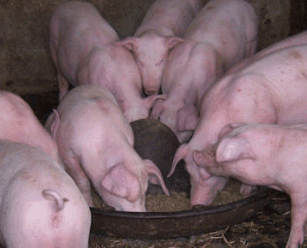
Philip Soos, Master’s research student and employed researcher at Deakin University, last night gave a presentation on negative gearing. His Powerpoint is provided below. A summary article was published on Monday in The Conversation.
I have been a long-time skeptic of negatively geared property investment, as articulated in detail on my old blog in June 2010 (click to read), more recently in a Special Report on MacroInvestor, as well as in a series of other articles published on MacroBusiness in recent years.
I am sympathetic to the arguments expressed by Soos because negative gearing is a huge waste of taxpayer dollars, does little to improve the supply of housing or hold-down rents, and artificially inflates housing demand and prices. I also agree that negative gearing should be abolished (i.e. quarantined from deducting rental losses against other income) or at a minimum permitted only on newly constructed housing.
Soos’ research report and presentation contains some great charts illustrating the extent of the problems associated with negative gearing, and debunks some common misconceptions.
For example, the below chart shows the growth of negatively geared property investment since 1993-94. Back then, there were 980,500 property investors in Australia, 500,000 (51%) of whom were negatively geared. However, by 2009-10, there were 1,751,700 property investors in Australia, 1,111,000 (63%) of whom were negatively geared.
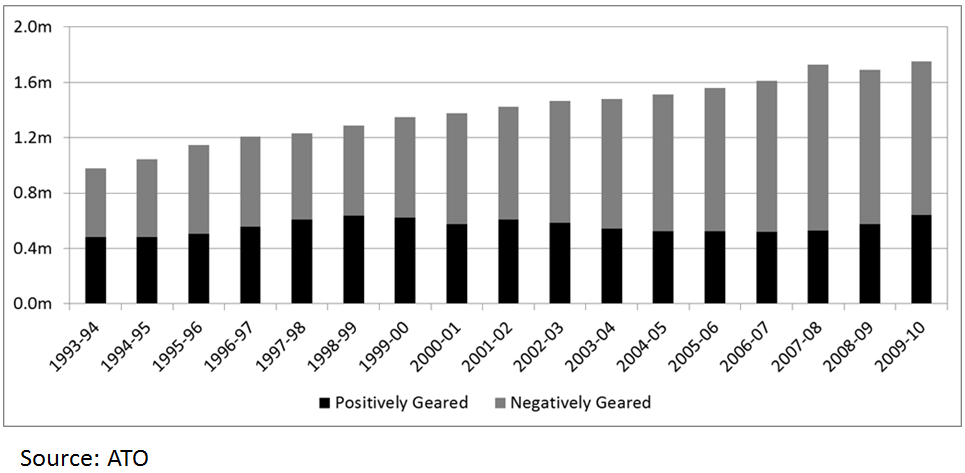
Losses by negatively geared investors have also skyrocketted. In 1993-94, negatively geared investors racked-up $1.9 billion of total losses (-$3,800 per investor). However, by 2009-10, total losses had increased to $10.1 billion ($9,100 per investor):
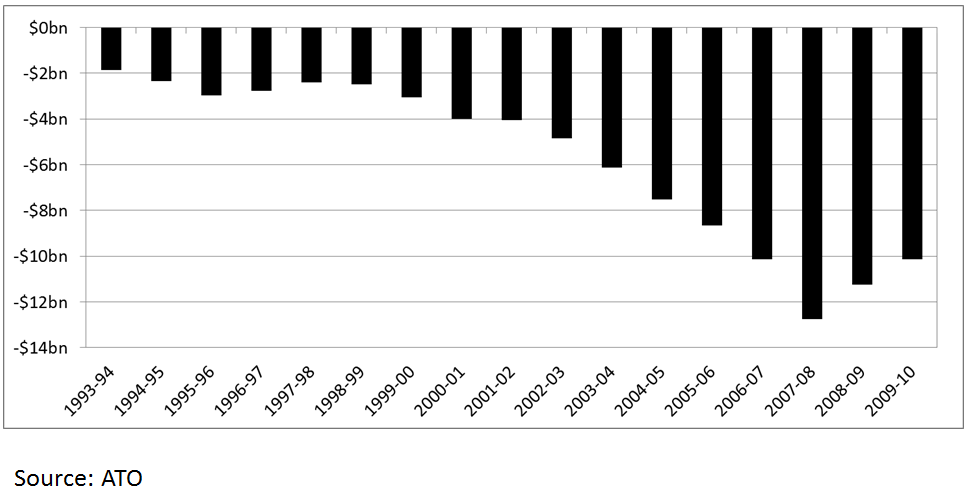
Negatively geared property investment is mostly a middle-class affair, with 76% of negatively geared investors earning $80,000 or less in 2009-10:
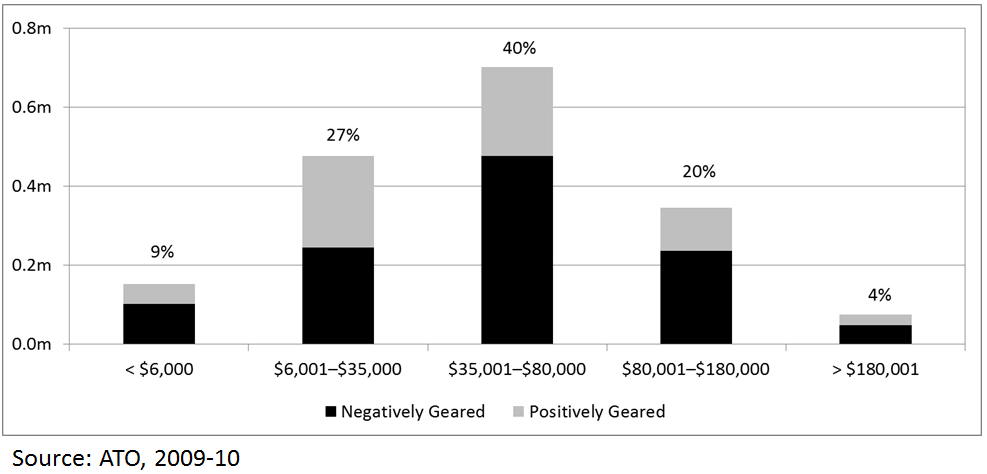
The cost to taxpayers from negative gearing has also tripled since 1993-94, from $850 million to $2.9 billion in 2009-10:
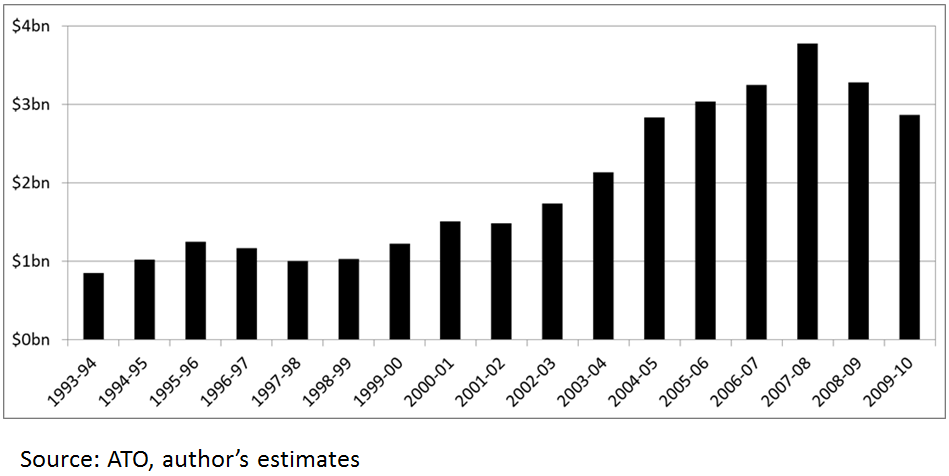
Despite its huge taxpayer cost, negative gearing has done little to boost the supply of housing, with over 90% of negatively geared property investors buying pre-existing dwellings:
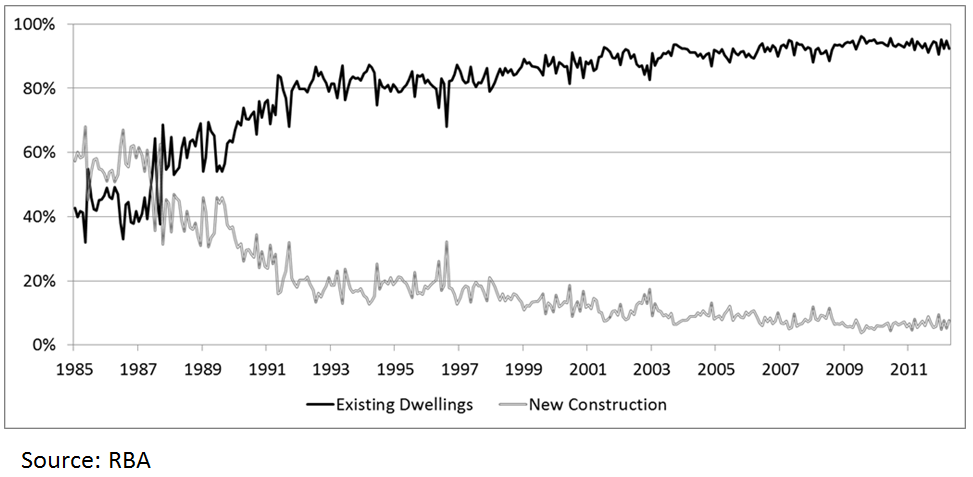
As such, the amount of investor funds going into new housing has barely shifted in 25 years:
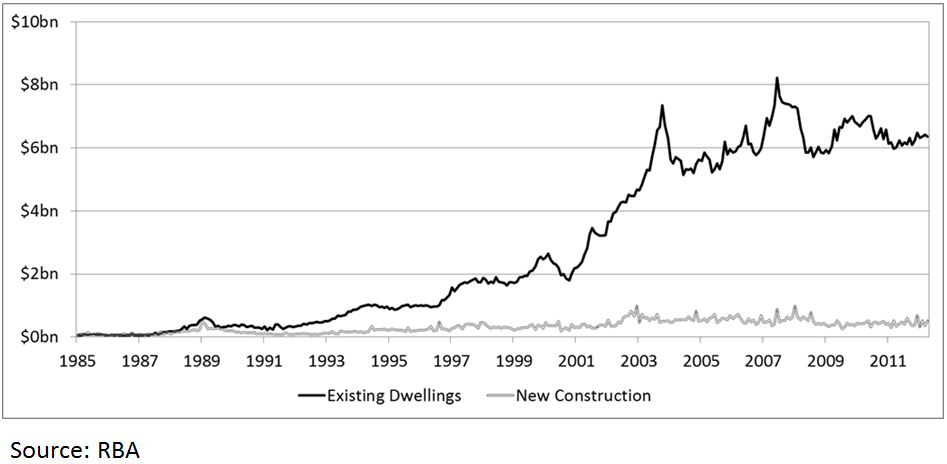
What about the common argument that the abolishion of negative gearing between July 1985 and September 1987 caused a rental crisis, causing rents to skyrocket across the country? This claim is easily debunked by the data, which shows that rents rose in four capital cities and fell in four capital cities:
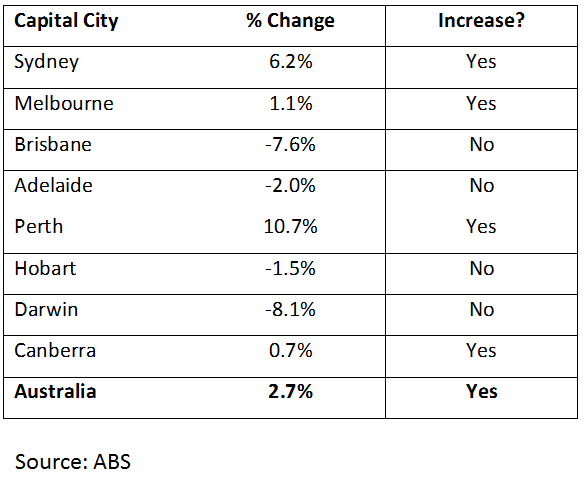
If it was true that the abolition of negative gearing caused rents to rise, shouldn’t rents have risen Australia-wide since negative gearing affects all rental markets?
In any event, I suspect the large increase in Australia’s population growth in the mid-to-late-1980s played the major role in increasing rents nationally:
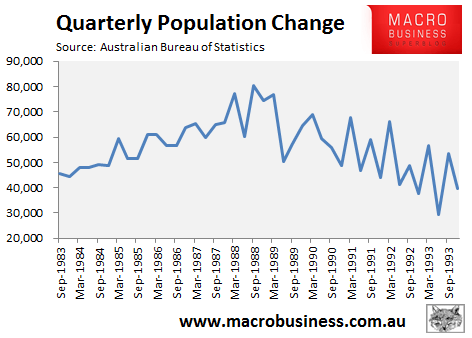
Overall, Soos’ research highlights in detail why negative gearing is poor policy that should be reformed on both equity and efficiency grounds.
Twitter: Leith van Onselen. Leith is the Chief Economist of Macro Investor, Australia’s independent investment newsletter covering trades, stocks, property and yield. Click for a free 21 day trial.
Philip Soos Written Off Negative Gearing Presentation Oct 2012

